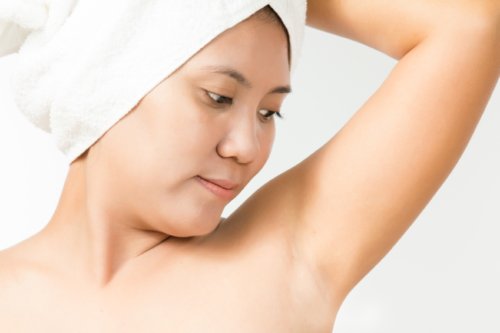 The first step to prevent skin chafing is to understand what it is. Skin chafing is essentially friction caused by skin-to-skin contact. Chafing could occur anywhere on your body, such as your underarms or even between your thighs (i.e. when you walk or run). The heat from the sun, excessive sweating, humidity, or cold air can also contribute to skin chafing and irritability.
The first step to prevent skin chafing is to understand what it is. Skin chafing is essentially friction caused by skin-to-skin contact. Chafing could occur anywhere on your body, such as your underarms or even between your thighs (i.e. when you walk or run). The heat from the sun, excessive sweating, humidity, or cold air can also contribute to skin chafing and irritability.
Causes of Skin Chafing
We mentioned that weather plays a role in skin chafing. But there are quite a few other factors that can contribute to chafing, some of which are a bit surprising:
- Excess fat
- Clothing (either too tight or too loose)
- Sweat brought on by sports/physical activity (the salt from sweat is actually the issue)
- Consistent and repetitive movements
- Shaving
- Overdeveloped muscles
- Sensitive skin
- Sand
- Clothing fabric
Symptoms of Skin Chafing
Although there are certainly areas of the body where skin chafing occurs more frequently, irritation can occur anywhere. For example, genital chafing is an issue that happens more often than one would think. Symptoms of skin chafing include:
- Pain and discomfort: For example, you may feel irritation between your legs or under your feet when you walk, jog, or run.
- Stinging or burning sensation: For example, you may experience a stinging sensation under your arms.
- Extreme irritation: The affected area may become red and inflamed.
The good news is that none of these symptoms should last for too long. If they do, however, you may need to seek medical attention.
Preventing Skin Chafing
Now that it’s clear what the causes of skin chafing are, there are a few methods that you can try to prevent it from occurring:
- Baby powder: Staying dry is a key prevention technique. When the skin is moist and wet, it can heighten irritable symptoms. A good tip is to apply soothing baby powder to areas that accumulate moisture.
- Lubrication: Since chafing is caused by friction, lubricating the areas of the skin that are constantly rubbing against each other decreases the friction and reduces the chances of skin chafing. You don’t need to buy anything fancy, a jar of petroleum jelly will do.
- Dress for the occasion: Take steps to protect yourself in both cold and warm weather climates. Dress accordingly for each occasion. For example, avoid wearing cotton while jogging to prevent sweat from clinging to your clothing. Compression shorts are also a good idea when jogging.
3 Steps to Treating Skin Chafing
Skin chaffing won’t go away on its own. In fact, it will get worse if left untreated. So follow these simple steps to treat skin chafing:
1. Keep the affected area clean: Clean the area gently as it will be sensitive and painful. Once you clean the area, you need to dry it thoroughly. We’ve already discussed how moisture or wetness impacts chafing so keeping the area dry, yet moisturized, should soothe irritated skin.
2. Moisturize: After cleaning and drying the area, the next step is to moisturize. Petroleum jelly, baby oil, vitamin E, lavender, or aloe vera will do the trick. Just remember to avoid participating in active sports or heavy forms of physical activity until the affected area is treated.
3. Medication: If all else fails, your physician may suggest some kind of medication. Anti-inflammatory medication is usually effective in treating the symptoms of chafing, along with any combination of the other treatments mentioned.
Dieting to Prevent Skin Chafing
Some people experience chafing more than others. For those who consistently deal with skin chafing, adjusting the diet may help. Incorporate foods into your diet that contain antioxidants or are rich in vitamin A, such as spinach, egg yolks, and other fruits and vegetables.
Take Skin Chafing Seriously
Chafing is not something that is debilitating, but it can impact some of the activities you enjoy doing. Jogging, playing sports, or doing anything active becomes uncomfortable when skin chafing occurs. Make sure to follow the prevention and treatment tips mentioned above to help prevent chafing in uncomfortable areas.
Read Next:
Sources for Today’s Article:
“Chafing,” Home-Remedies-for-You.com; http://www.home-remedies-for-you.com/remedy/Chafing.html, last accessed December 8, 2015.
“Chafing: Causes and Treatments,” WebMD web site; http://www.webmd.com/skin-problems-and-treatments/guide/chafing-causes-treatments, last accessed December 8, 2015.
